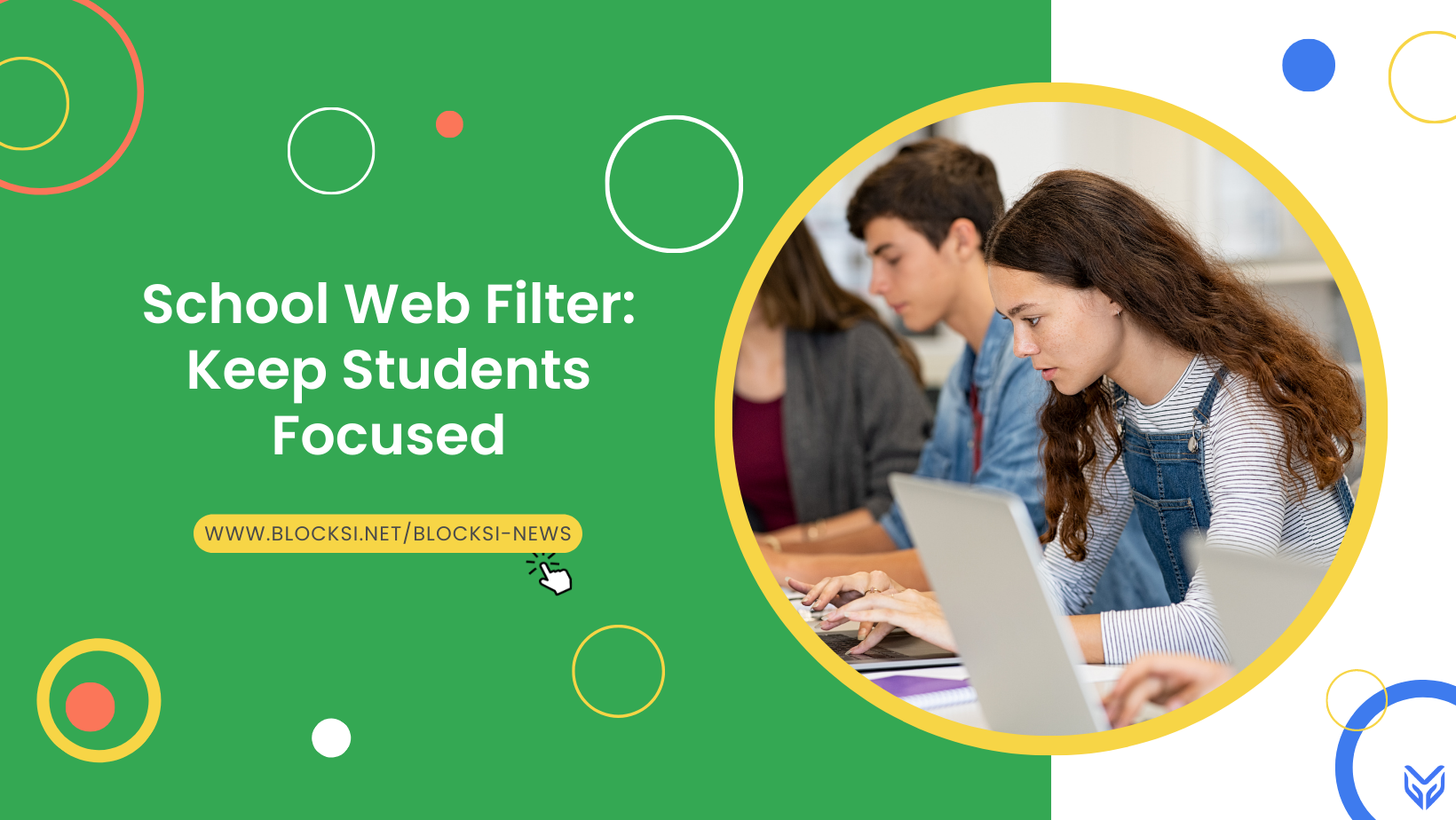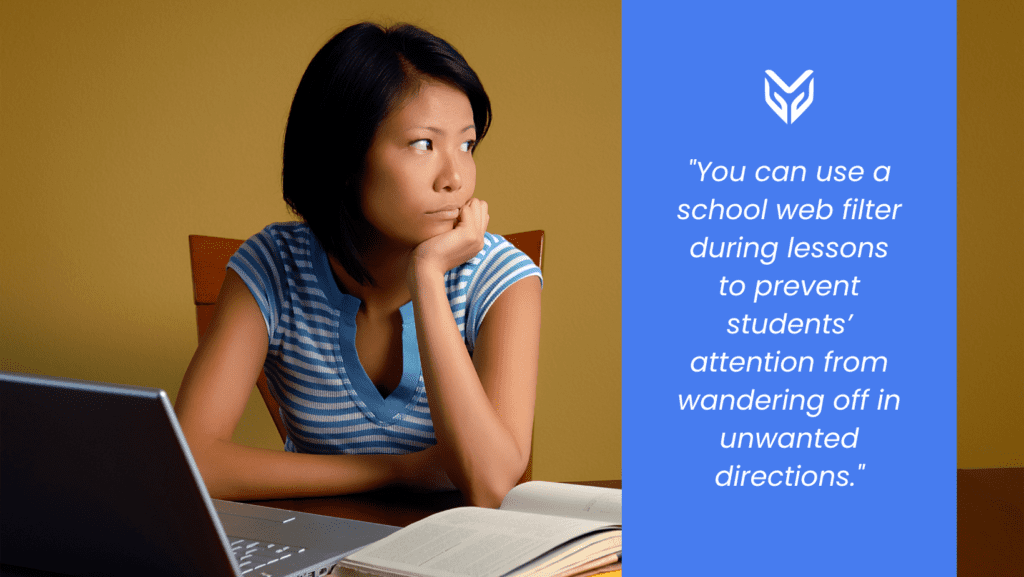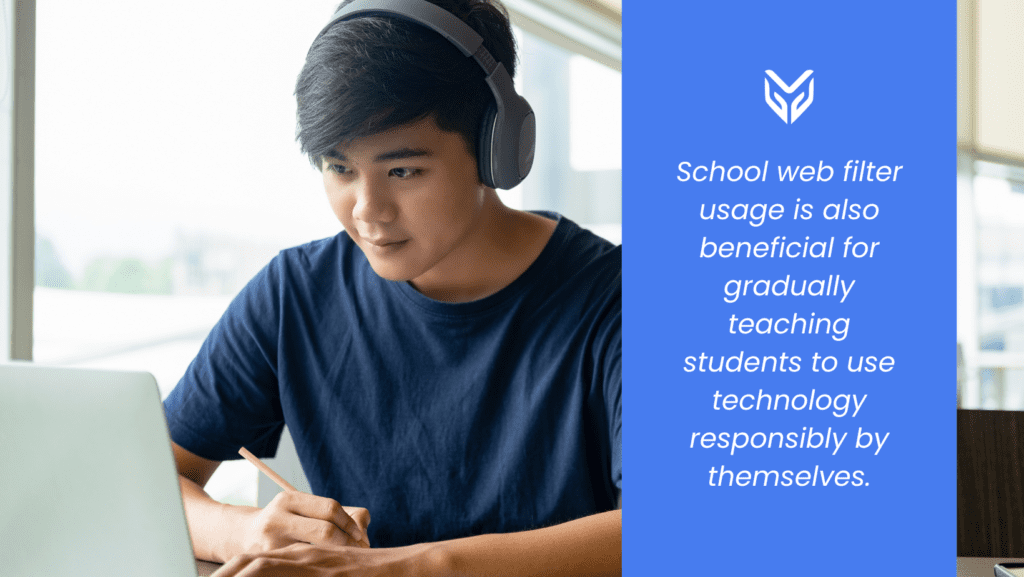NEWS
School Web Filter: Keep Students Focused

Maintaining student focus in the classroom may come as a challenge for various reasons: lack of engagement, attention span limitations, distractions from technology, environmental factors, and much more. Teachers are the leaders of their classrooms, but with all the distractions, it can be difficult and overwhelming to maintain a focused class of students at all times. But since modern problems require modern solutions, this can and must be tackled in the best interest of students’ learning. One method of staying on top of unwanted distractions and similar dangers is utilizing a school web filter to control what students see and do online.
As parents and teachers worry more about children reading and accessing improper content online, web filtering has recently grown in popularity. Consequently, various tools to protect internet users have surged. For example, web content filters and software programs installed on a computer system to limit access to particular types of content. The term can be used to describe both category-based and website-specific filtering.
You may already be aware of some tools that help improve the classroom learning experience. School web filters are a prime example. A web filter for school is exactly what it sounds like – a solution that filters web content that students would otherwise have access to without any guidance or limitations. And besides keeping students from accessing unsuitable material, it even safeguards them from the unwanted sharing of personal information. Additionally and very importantly for effective teaching, the filter tools also aid in maintaining students’ focus.
You can use a school web filter during lessons to prevent students’ attention from wandering off in unwanted directions. Distractions, like most social media and games, generally don’t have any place in the classroom. But that is generally speaking – filtering tools allow you to supervise what you want students to do and what not to do and when to put these protocols in place.

Web Filtering for Schools Is One of the Greatest EdTech Products
The most effective web filtering solutions usually come as part of comprehensive school management solutions that also include classroom screen monitoring software. This makes teaching not only safer, but also more effective. With the combination of both, you can plan and carry out structured lessons while using modern technology that aids you through it all.
Classroom screen monitoring software allows you to do all of the following:
- Share screen and content with students
- Oversee each student’s activities in real time
- Force and close unwanted content
- Monitor students’ progress
- Enhance individual and group communication
All of these help you produce exciting and dynamic lessons, boost classroom productivity, ensure better student focus and concentration, and offer better student guidance.
Student Safety and Welfare Must Come First
And let’s not forget one of the most important aspects of web filtering for schools: maintaining student safety. The world wide web indeed comes with numerous upsides and potentials, but recognizing its negative sides is essential when considering how many minors use it. School web filters detect unwanted content that can be inappropriate, misleading, or even harmful, and (with the right policies) block it. Not to mention all of the viruses and malicious ransomware roaming the internet.
Using web filters is of utmost importance, and it can even save lives. It enables educators to spot early warning signs of violence, bullying, and self-harm in order to intervene and prevent it. Some programs even provide trend analytics that reveal the websites students visit most frequently and are faster than humans at spotting bullying or self-harm threats.
So, besides blocking unwanted internet content, classroom screen monitoring software also detects harmful behavior based on AI scans and additional human reviewing. Why is this especially crucial? The primary responsibility of a school and its principal is to ensure the safety and security of the students in the classroom. So overseeing their online activities is one of the keys to keeping them safe. If students are exposed to cyberbullying or look for something that could be hazardous to them or anyone nearby, you can simply intervene because you can see what they are viewing, either in-time, while in the classroom, or once a threat is reported to the school administrator. So, for example, if students are searching for weapons or drugs, you or the software can detect and prevent any dangerous activities before anything terrible happens.
Using Modern Technology Cannot Be Taught Without Using It
School web filter usage is also beneficial for gradually teaching students to use technology responsibly by themselves. As a teacher, you can encourage them to use technology in balanced and valuable ways and still stay on top of things because you can divert their attention elsewhere and further educate them on why some content is harmful and unneeded.

Content management software is essential for keeping students from accessing inappropriate content while still giving them access to digital learning resources and research relevant to their school work. By setting boundaries on what type of content students can access, they are encouraged to think about their online actions and the impact they might have. However, school web filters can’t teach internet ethics on their own. So, while web filtering plays a significant part in teaching students digital literacy skills, educators and parents still have to play an important role in teaching them how to become responsible digital citizens of the 21st century.
But Student Safety Does Not Have To End When Students Leave School Grounds
Not only can you restrict websites in school, but parents can also filter content students access on their school devices once they go home. This allows for the safety of internet usage to spread throughout the children’s day-to-day activities. Besides controlling and filtering what students are doing, parents can also control their screen time and make sure the amount of time students spend online is reasonable.
How To Find a Proper School Web Filter?
Many businesses offer solutions for observing screens, such as ActivTrak, a screen overview program that enables managers to monitor employees’ activities in real-time and prevents them from using social media during work hours. But considering finding an optimal option for a classroom or educational setting, an application like Linewize or Blocksi is more suitable. Both of them require installing only a browser extension. The latter, Blocksi, is made specifically for teachers, educators, and principals, and combines all three of the most important school management components. Cloud-based content filtering, classroom screen monitoring, and student safety all enable a fun, effective, and safe learning environment, allowing teachers and students to make the most of their education.
A school web filter is a practical device that should be put in place at every school to block and allow content. Overall, employing a web filter can help schools in several ways, from allowing teachers to concentrate more effectively on their instruction to blocking undesirable and unnecessary websites. Simply said, internet filtering software eliminates a lot of the hassle associated with navigating unsuitable websites and online material. In addition to these advantages, the software’s controls allow parents to add any content additional to the one you want to prohibit on the school’s internet. Certain file types can be blocked; these controls can either totally block websites or just permit access once the user inputs certain text sequences.
Content filtering is an essential function in the educational setting, mainly out of a moral commitment to safeguarding children. However, it’s equally important to choose and employ intelligent software to ensure that the filtering doesn’t go too far and restrict students’ ability to study.
In conclusion, such content filters are essential for teachers, administrators, and even principals to provide students with a secure, safe, and productive educational environment. School web filters safeguard students from improper information and online risks by limiting access to these sites and ensuring that they use the school’s internet connection only for educational purposes.





